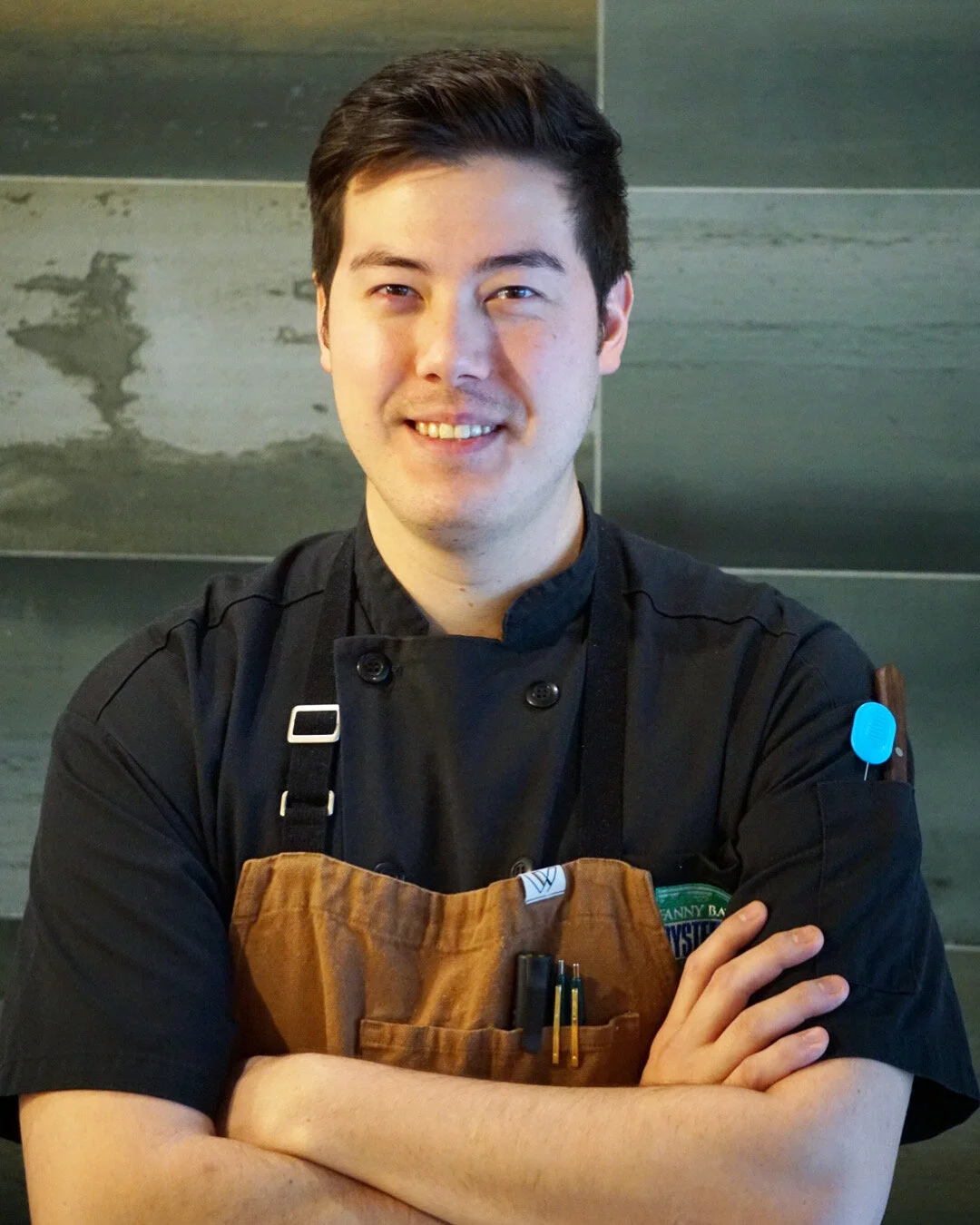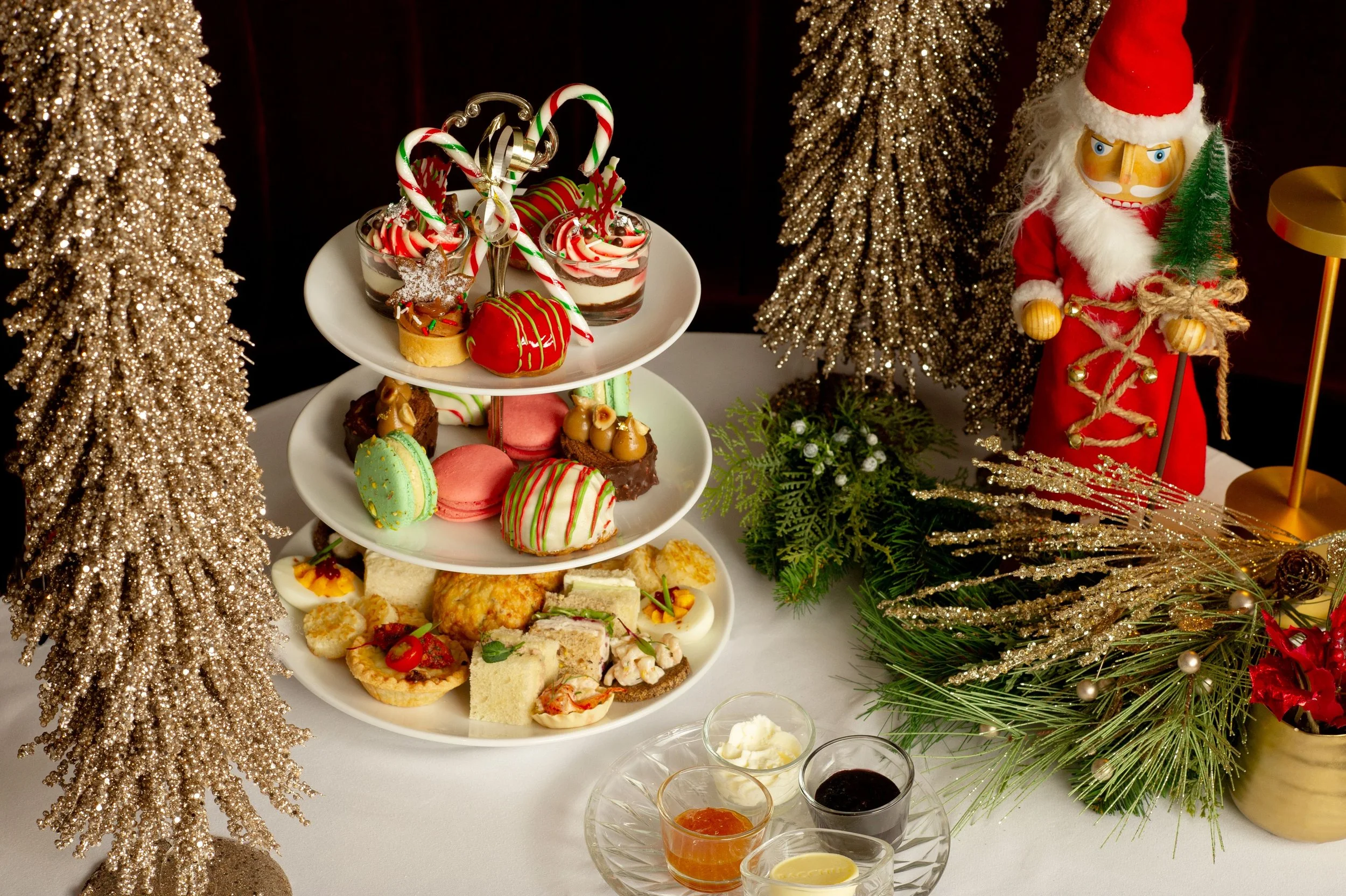Local chef Tommy Shorthouse cooks up a culture of sustainability
Helming the kitchen at Fanny Bay Oyster Bar, the fan of “odd” fish sees his work as a science and an art
Born in Taiwan and raised in B.C., Fanny Bay Oyster Bar executive chef Tommy Shorthouse puts sustainability on the menu. Photo by Fanny Bay Oyster Bar.
GEODUCK, OCTOPUS, AND sablefish collars: the B.C. species aren’t the first thing to come to mind upon mention of Fanny Bay Oyster Bar. But the downtown Vancouver restaurant’s recently appointed executive chef Tommy Shorthouse is making a name for the place by going beyond the name itself.
The Taiwan-born chef is among a wave of local kitchen talents who are working to ingrain sustainability—a cornerstone of coastal culture—into food and restaurant culture.
But first, a step back: Shorthouse fell in love with food as a child, and it was at home where he decided he wanted to pursue cooking as a career: “It was watching my grandma prepare food for our family of five three times a day, and how much care she put into every ingredient,” Shorthouse tells Stir. “Her Sunday roast-beef dinners are a fond memory for me, but I think I was the most amazed by her ability to pull off so many different dishes all at the same time—similar to a restaurant—especially on the holidays.
“I love the ability to put my cooking philosophy on a plate and get the opportunity to coach others on what really matters to me when it comes to food,” he says.
Shorthouse, whose CV includes roles at Joe Fortes, YEW seafood + bar, Homer Street Café, Wild Tale, and Boulevard Kitchen & Oyster Bar (where he was part of the restaurant’s opening team led by Alex Chen), is a graduate of VCC.
Geoduck is a key ingredient in Fanny Bay Oyster Bar’s Poke Bowl. Photo by Fanny Bay Oyster Bar
One way he relays what’s important to him inside the kitchen and out is by using every part of the fish and using only ocean-friendly seafood.
“But as a chef it’s more than just the ingredients; it's also about finding both easy and innovative ways to include sustainability on the rest of our menu as well,” Shorthouse says. “For instance, our sablefish collars—it’s seen in general as part of the fish a restaurant would discard or not serve, but we give them a new life on our menu as a playful take on a sustainable ocean ‘chicken wing’.
“Paella is a dish where we are constantly switching out the fish for what's freshest and in season,” he says. “Our take on the Poke Bowl with geoduck and octopus is unique to us, and we love getting guests excited about eating ‘odd’ seafood. It's important to me because we want to showcase a product at its best and make sure that product is around for future generations in that same condition if not better.”
He doesn’t take shortcuts when it comes to using sea-friendly ingredients creatively.
To prepare the sablefish collars, for example, Shorthouse splits them then marinates them in a soy base overnight. They’re fried to order, tossed in peppadew peppers, and served with shishito peppers—the so-called roulette peppers given that one in every 10 or so is hot—and a sauce of soy and cilantro.
The octopus in the poke dish is a three-day culinary process. It’s marinated in red wine overnight. The next day, it’s drained, with the red wine used for a court-bouillon that the octopus is then poached in. On the third day, the seafood is dressed in garlic oil and salt. Shorthouse grills it, slices it, and dresses it in sherry vinaigrette before adding it to the colourful bowl, which has a base of soba noodles rather than the conventional rice.
“I draw inspiration from coastal areas all over the world for my dishes, but I want people to still taste BC in every bite,” Shorthouse says. He add that this includes making sustainable seafood more accessible than what’s typically offered a high-end dining establishments.
Sustainability, however, can be complicated, and misconceptions abound.
Consider the current debate around whether to have wild B.C. on restaurant menus. Ned Bell, founder of Chefs for Oceans and co-owner/executive chef of Naramata Inn, notes that despite the closure of 60 percent of B.C. salmon runs earlier this summer, many salmon fisheries are in fact sustainable. He notes that the fisheries that remain open are “managed very conservatively using science and abundance, in consultation with First Nations, harvesters, and stakeholders to ensure responsible use”.
Shorthouse says he listens to recommendations from science-based groups like OceanWise when it comes to deciding what ends up on the menu, and it’s ever-changing.
“I want to support eating as much wild local fish as sustainably possible, but often that means finding other options to make sure we aren’t taking too much of one thing,” he says. “There are farms out there doing the right thing and making good food for us when it comes to fish, like Gindara Sablefish that farm a local species of just about the tastiest fish on Earth. For me it’s not an argument of farmed versus wild; it’s better to think about the management of each…as well as to diversify our palate for other fish options.”
“A great place to start is weeding through the politics around sustainability and connecting with the communities, farmers, and scientists on the ground that see and actively participate in sustainable food creation and culture,” he says. “There are issues in the global seafood market that people point a finger at, but the best way to make effective change is to do it locally and actively educate customers on best choices that you yourself support.”
Shorthouse is excited about things like a new seaweed-based bioplastic that Fanny Bay Shellfish Market (which is located within the Oyster Bar) is introducing in hopes of eliminating single-use plastic from its operations.
While this kind of innovation may be the future of secure seafood, Shorthouse sees cooking as much science as it is art.
“It takes control and consistency to get it right every single time,” Shorthouse says. “For me, it's very expressive.”















